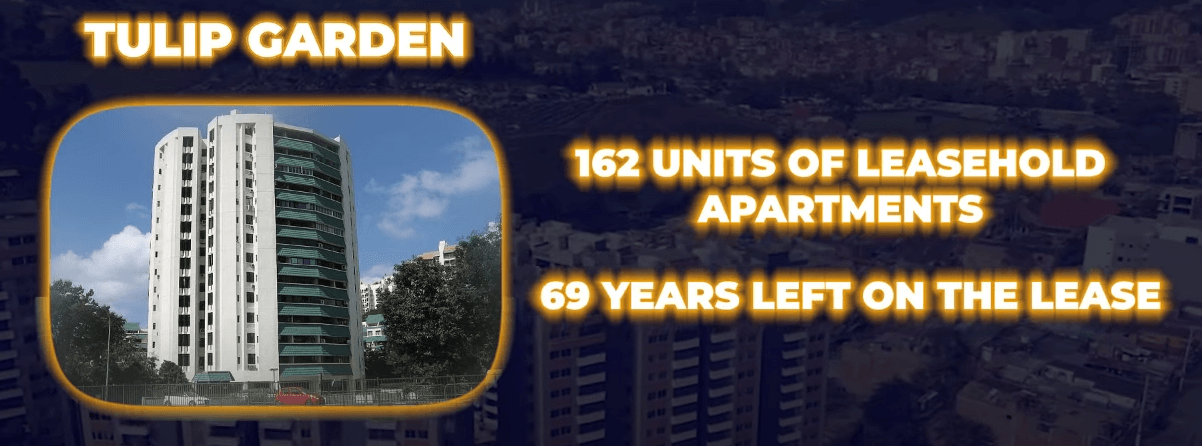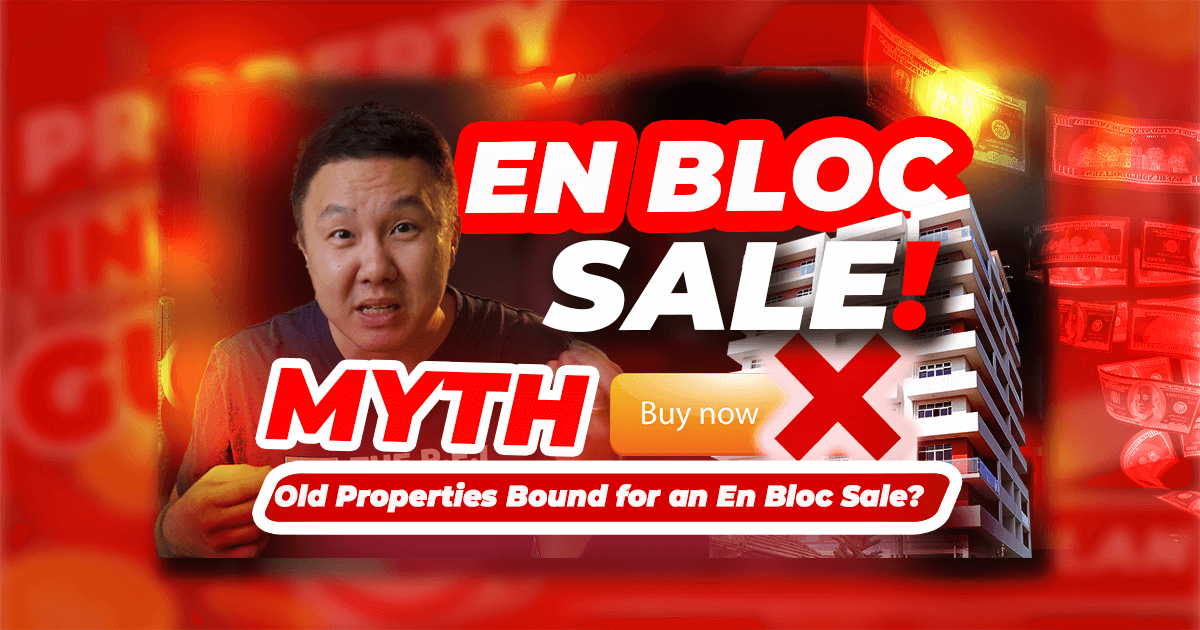What exactly is an En Bloc Sale?
It’s something you’ve probably heard me say a bunch of times. OR Something that comes across your property listing feed.
En Bloc sales are like the talk of the town in the real estate world. People have so many questions and, honestly, a bunch of MYTHS surrounding them.
That's why it's crucial to understand what's true and what's not because it could make a huge difference in your property journey.
Let’s start with the definitions :
An en bloc sale is also known as a collective sale.
It refers to the process where a group of property owners in a particular development collectively agrees to sell their properties together as a single transaction.
To put this into perspective, Let's say you and a group of neighbors in your condominium complex decide that it's a good time to sell your individual units.
Instead of each of you selling your units separately, you all agree to sell them together as one large property package.
This way, a developer or buyer can acquire the entire complex in one go.
By doing this, you hope to get a better overall price for the whole complex compared to selling each unit independently.
Singaporeans are not always in agreement when it comes to En bloc sales.
It has always been a hot topic in the real estate market.
Property owners and investors often have mixed feelings about them, influenced by common myths and misconceptions.
So, let's explore the En bloc process and debunk some of the myths surrounding it.
Myth 1: Old Properties Will Definitely Get En Bloc
Reality: Not all old properties are guaranteed to undergo en bloc sales.
There are two critical considerations come into play before a property gets considered for an En Bloc: PROFITABILITY AND THE HUMAN FACTOR
- Profitability for Developers - Developers are in the business to make a profit. When considering an old development for en bloc, they focus on two key metrics:
- Existing Strata Area (ESA): This represents the total floor area of all individual units in the development.
- Gross Floor Area (GFA): GFA is the total area that can be built on the land, considering zoning regulations and plot ratios.
For an en bloc sale to make sense, there must be a gap between ESA and GFA.
In other words, developers should have the opportunity to maximize the available space by building additional units for sale.
For example, the Euro-Asia Apartment sold en bloc for $222 million had a maximum GFA of 158,132 sqft.
In comparison, the ESA was only 119,060 sqft.
This gap allowed for potential profits and the successful En Bloc Sale.
- The Human Factor
En bloc sales require the approval of property owners within the development.
The agreed-upon sale price must be reasonable for the developer to proceed with bidding and purchase.
For instance, the recent attempt to en bloc People's Park Centre failed to attract developer bids because the reserve price of $1.8 billion translated to a land rate of $2,620 per square foot (psf).
When factoring in construction and marketing costs, the psf price to the public could have reached up to $4,000 psf—a risky proposition for developers, as the public might not accept such high prices.
Myth 2: En Bloc Sales Are Always a Good Thing for Property Owners
Reality: En bloc sales can be advantageous for property owners seeking to profit from their properties, but they are with risks.
As a rule, most of the homeowners of the development for the proposed enbloc sales need to agree. If the homes are older than ten years, at least 80% of the owners must say yes. For newer homes, it's an even higher requirement—90% agreement.
If enough homeowners agree, even those who don't want to sell might have to leave. They will still get some money from the sale, but they have to find a new place to live because they can't say no to the sale.
There is no guarantee that a developer will obtain the necessary approvals for redevelopment, and residents may face disruptions.
Myth 3: En Bloc Sales Are Only for Old and Dilapidated Properties
Reality: En bloc sales can happen to properties of any age or condition.
Even relatively new properties have undergone en bloc sales in recent years.
In Singapore, certain property projects undergo en-bloc sales even before reaching an uninhabitable state.
An example is The Olivio, a 36-unit freehold condo, which became the youngest ever to go en-bloc in 2018 after just four years.
Another instance is The Asteria, a 23-unit freehold condo, which went en-bloc in 2017 at the age of nine.
Myth 4: En Bloc Sales Are Only for Freehold Properties
Reality: Both freehold and leasehold properties can be sold en bloc.

In 2019, a notable en bloc sale involving leasehold properties occurred in Singapore. The development known as Tulip Garden, comprising 162 units of leasehold apartments with about 69 years left on the lease, successfully went through the en bloc process. This contradicts the myth that en bloc sales are exclusive to freehold properties.
However, the challenges and considerations may differ, with leasehold properties requiring a more strategic approach due to their shorter time frame for redevelopment and recouping investments.
Myth 5: En Bloc Sales Are Only for Large Properties
Reality: En bloc sales can involve properties of various sizes.
Smaller properties may need help finding buyers, but they are not exempt from the en bloc process.
Example of this are the Jansen Mansion, a 12-unit development near Kovan MRT Station and Blossom Mansions, a development with 20 units at Lorong 37 in Geylang.
Myth 6: En Bloc Sales Are Only for Properties in Prime Locations
Reality: En bloc sales can occur in any location.
Properties in prime locations may be more desirable to developers. Still, the en bloc process is wider than such areas.
Consider the case of a residential area on the outskirts of a city, where older buildings are situated. These buildings may not be in a prime location, but if the area is undergoing urban redevelopment or experiencing increased demand, property owners might decide to collectively sell their units through an en bloc sale.
In this scenario, developers could be interested in acquiring a larger parcel of land to build new and more modern structures. The attractiveness of the location may not be solely based on its prime status, but rather on the potential for growth, revitalization, or a shift in market trends. Therefore, the myth that en bloc sales are limited to prime locations is debunked by the reality that these sales can take place in diverse settings where there is potential for redevelopment and increased property value.
In conclusion
En bloc sales in Singapore are a complex and multifaceted process.
Understanding the nuances and debunking common myths can help property owners and investors make informed decisions.
It's crucial to evaluate each en bloc opportunity on a case-by-case basis, considering factors like profitability, market conditions, and individual circumstances.
So, what is your best bet in securing a six-figure profit potential?
Seeking guidance from real estate experts like me, Coach Edmund Tan, your Singapore Real Estate Insider, with years of experience in careful data and research analysis, as well as your staying updated on the latest developments in the property market.
Remember, invest wisely and stay tuned.
